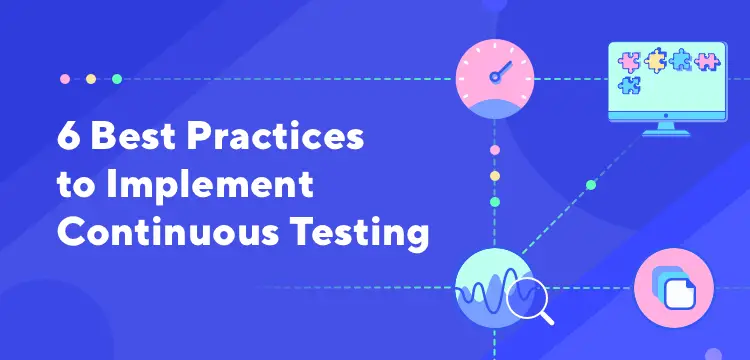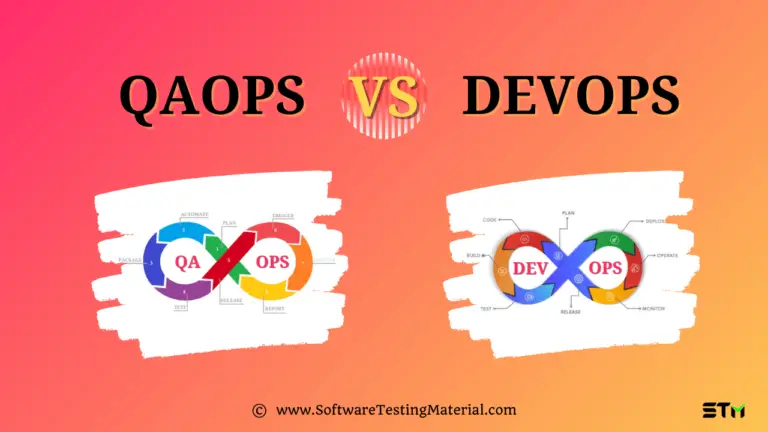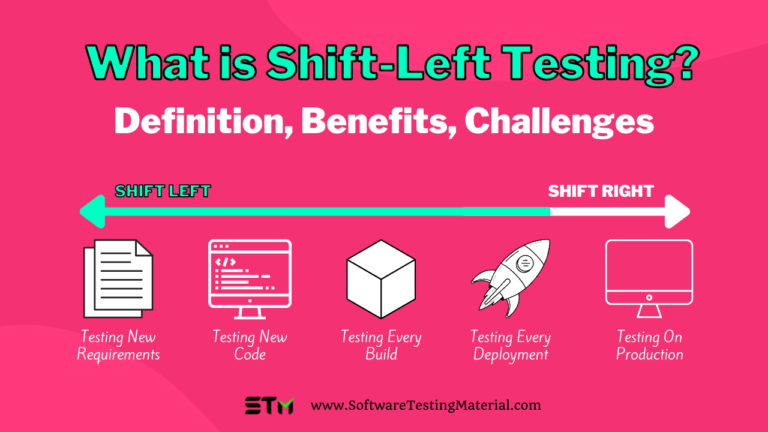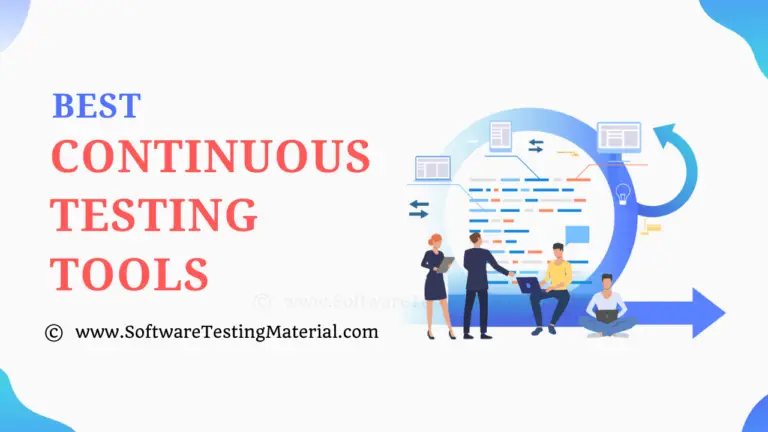QAOps – What it is? Process, Implementation & Benefits
QAOps is a fairly new concept that became popular after DevOps. While it can be hard to keep up with so many new terms, each one is important in the software testing and development industry.
DevOps made it easier to deliver quality products faster, which has greatly improved customer satisfaction. Following its success, developers started using similar practices to boost workflow and product quality. One of these key practices is Quality Assurance.
QAOps brings together quality assurance and development operations, helping organizations improve the way they work. Let’s take a closer look at what QAOps is and understand where it fits in today.
What is QAOps?
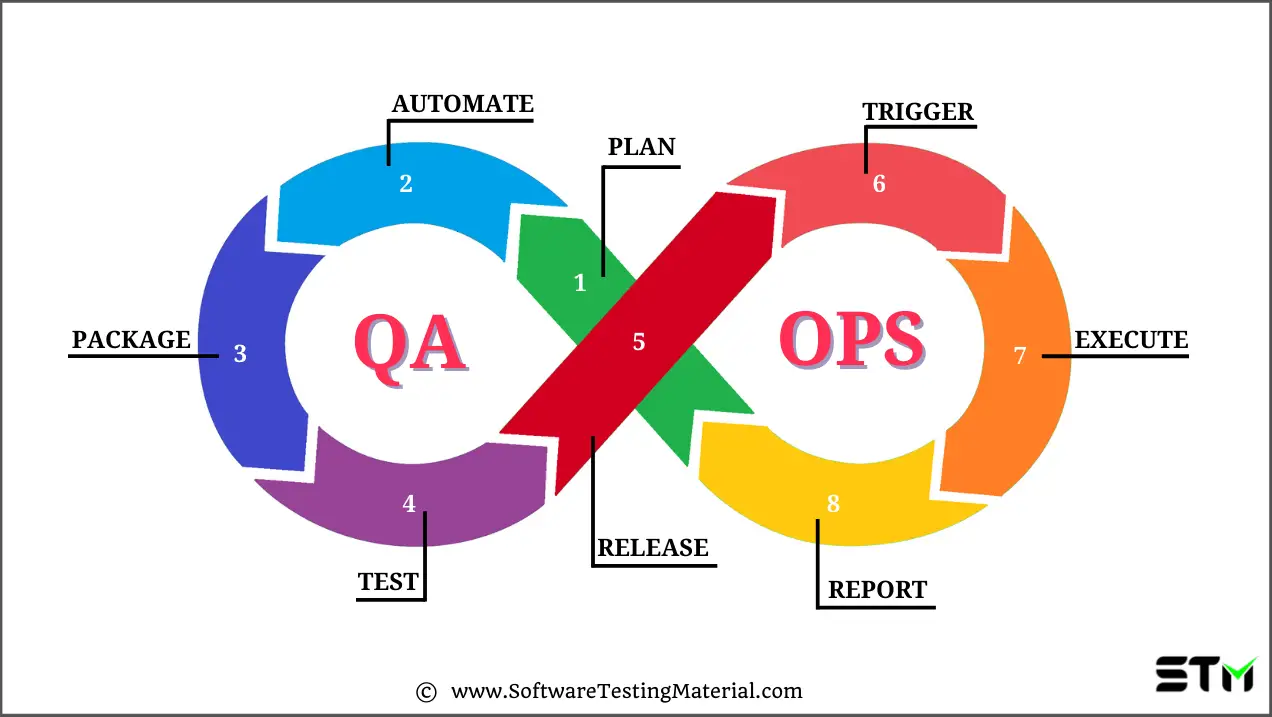
In simple terms, QAOps combine Quality Assurance (QA) and software operations (Ops). In relation to the software development life cycle, this process is an integral part of the delivery strategy as it focuses on ensuring the top-notch quality of the developed software.
It’s very important to understand that QAOps is not used in segregation. The QA team works in close interaction with the software development team and operations team. The entire process begins with the development of software and leads on to the QA team to assess and find issues in the software to prevent any quality compromise before it reaches the user.
It might sound time-consuming at this point, but the main goal is to increase the speed of the software delivery process and provide a quality web application along with it. It’s a combined process. That’s how we achieve the final QAOps framework- by integrating the three interlinked processes- Dev, Ops, and QA (Development, Operations, and Quality Assurance).
Understanding Continuous Integration and Continuous Delivery (CI/CD)
While the software development life cycle depends more on the QAOps process, its backbone lies in the basic framework of DevOps – CI/CD (i.e., Continuous Integration and Continuous Delivery).
In any development process, continuous integration and continuous delivery mainly involve creating and making changes in the software that developers made keeping the core product intact. Whatever chances of defects and conflicts that might be affecting the complete project, gets detected during this process. Fundamentally, the two practices differ from each other in certain ways.
Continuous Integration
During the development methodology, developers often integrate codes to modify the original product. It involves running several tests to check whether the application remains intact with new additions. With Continuous Integration, developers can:
- Detect bugs in the local build at an early stage and fix accordingly.
- Reduce the number of bugs that might crop up during the development cycle.
- Automates the process and reduces manual effort
- Achieve better transparency on the overall analysis process
- Optimize the budget of the entire system
Continuous Delivery (or Deployment)
After the required changes in the development process, focus shifts to the deployment process, which includes all kinds of modifications to deliver the application in a seamless manner. The goal is to plan and predict the schedule of deployment when demanded. This routine helps in many ways:
- Reduce the risk of deploying to the users
- Lower certain fixed costs related to the release
- Making more time for the testers to ensure high-quality of the application
- Lesser pressure on the delivery team
- Enhance product quality via new testing methodologies
With seamless integration of both the above practices, a huge amount of rework which was a necessity for the traditional development life cycle gets reduced largely for the developers and testers. All they need is sufficient time and required procedures for the successful testing and deployment of a quality application.
Steps in QAOps Process
SInce QAOps is all about developing a testing platform to test the quality of the application, it needs to be executed in a proper way. The entire process requires setting up different automation tools within the pipeline of the development life cycle (CI/CD) in order to ensure complete testing of code, data, and software configuration along with the new modifications.
The QAOps process can thus be achieved in three simple phases-
#1. Trigger
The most crucial part of the entire process is to trigger the application. This is done by building the right tests when the application is being integrated into the CI/CD pipeline. These tests have to be appropriate for the technical changes in the application, otherwise, it may cause losing time in testing unnecessary areas. This is one reason why businesses should plan out the testing time, the other reason being reducing testing costs.
While designing the triggering phase, you should keep three things in mind:
- Map out the tests at the initial stage
- Consider all types of testing, including integration tests
- Implement tests for code check and deployment.
Software development today has become quite popular and complex. To ensure a good quality product, businesses should plan the triggering process in a way that focuses on all aspects of testing the software to cover all the areas. This is why this process comes to mind early in the development life cycle. In a way, the QAOps process is dependent on this step as its successful run can save a lot of headaches for the software team and lead the rest of the process.
#2. Execute
When the trigger phase is approved, the next step is to execute. This step involves parallel testing for the framework along with the software quality to ensure that developers have everything they need to generate results as desired. This should go on along with the DevOps testing and the environment to avoid any obstacles in the QAOps process.
There are various key factors that determine the execution planning in the development life cycle:
- Parallel testing that kick starts the step
- Finding the right support for all the integration tests
- Checking on the scalability of the entire process
- Ensuring the tests are executed in the correct sequence as required
- Distributing the load of execution tests among various departments
- Ensuring that all the framework and infrastructure are available for execution of the entire process
It’s crucial to understand the importance of this step in the QAOps process. Since the triggering phase involves planning out the tests, this step is executing the plan accordingly. Therefore, the two steps need to be performed consecutively.
#3. Report
The final step in the process is reporting. This step includes doing exactly what it means- reporting the results of the above two steps. Just like any other process, reporting completes the entire QAOps process. All the work and planning followed in the trigger and execution phase is drafted into a report module for a complete brief. The module design requires detailed information on all the steps mapped and followed by the project team during the quality assurance process. It goes on record for the stakeholders to compare and analyze later.
For a better understanding of the report module design, the team requires to focus on some key areas:
- Snapshots as well as a detailed view of the entire project
- Focus on the root cause of the different steps involved
- Faster availability of specific results without confusion
- Ensure accessibility of the report whenever needed
- Complete details of the report so they can be referred again in the future debugging process
- Checking on the scalability of the report while handling a large volume of data
A good QAOps set-up is a boon for the software delivery pipeline. Businesses need to follow the entire process with proper planning and execution to leverage maximum benefit out of the process. When the three steps of the QAOps process is successfully achieved, it will lower the testing time and costs to a great deal and that too, for multiple projects at a time.
QAOps Implementation in Testing Models
Unlike the traditional software development models where miscommunication issues were much more pressing, the QA framework has tightened those loose ends. In other words, QAOps being the passing factor for the software just before release, it checks upon quality, reduces testing time and costs, rendering it easy for the different teams to come up with better products for the users.
In the field of software testing, the QAOps process claims to be crucial to enhance most of the testing models. Let’s have a look at the different testing processes that can be highly improved utilizing QAOps.
Automated testing
Automated Testing is considered one of the most reliable methods of testing software. Basically, this model helps to compare the actual outcomes with the expected ones. In this model, QA analysts can analyze the test results and recommend changes to the subsequent development teams.
What it requires is a thorough understanding of the product, its functions, and specifications before the QA analysts can come up with a suggestion for its modifications. With that, they decide the number of tests to be automated, based on the product stage in order to tailor them according to their desired goals.
Regression Testing
Regression Testing comes in handy when after the software is already developed and released, you need updates in the current framework and re-release the product in the market. In this model, QA analysts are required to test if the newly required updates bring any major changes to the product.
Since this testing tries to add a new dimension to the product, it can sometimes cause certain unnecessary defects in the product. To avoid this mishap, QA engineers can help make the process seamless without wasting time and money on the changes.
Parallel Testing
Parallel Testing is done to ensure that all the parts of the product are operating properly. So the application goes through multiple automated tests at the same time, drastically reducing testing costs and time. QAOps framework can accelerate the testing within the same delivery pipeline within the given time.
One factor to consider during the testing process is that the amount of data on the hardware and infrastructure is quite huge and to maintain parallel tests, analysts need a robust testing cloud to manage the load of increased data processing. If tests run successfully, it becomes easier for the QA analysts to detect any flaky tests early in the process, saving both time and costs.
Functional Exploratory Testing
Functional Exploratory Testing is run to make sure that the product outcome meets the desired outcome. The entire testing process depends on the experience of the test engineers here as they have to think of possible bugs in the system and fix them before the release.
Basically, testers need to think beyond the scripted code in order to plan the next steps of action based on the current position of the application. This procedure helps in testing critical applications and with the collaboration from the QAOps team, the operation can be better executed.
Test scalability
Test scalability comes into the picture after the product launch. This non-functional test is carried out based on the performance of the product with the users. Test scalability is carried out to check how the software performs under different levels of load. In this case, customer feedback is important to realize what changes need to be made to improve the performance further.
The QAOps team, in this procedure, needs access to the scalability framework and perform the required tests in order to accelerate the test speed with each step. With their help, these tests can be less complex and easier to conduct.
QAOps vs DevOps
| DevOps | QAOps |
|---|---|
| Developers and Operations have the primary roles and QA functions as a subset of development | QA specialists work closely with Developers and Operations in primary roles |
| Focus is more on deploying software quickly | Focus is more on ensuring the quality of software |
| Quality of software application is good | Quality of software application is excellent |
Benefits of QAOps Process
In the current market conditions, where software development companies are in a constant battle with their products, QAOps Process makes it easier to achieve their goal. By integrating the different testing methods with QA operations, companies can benefit in a number of ways.
- One of the first reasons for introducing QAOps was to ensure a greater quality of new products. When the QAOps steps are implemented along the software delivery pipeline, any product can be expected to maintain the standards of quality, as compared to the traditional methods of software testing.
- Along with efficient software testing, QAOps also ensure reducing the timeframe required to deliver a finished product. This is because of the collaboration of development teams and quality assurance teams who work together, enhancing their skills and saving time for additional upgrades.
- The QAOps process requires testing and reporting on the final outcome, which ensures a better understanding of the entire process for the development and operation teams. This boosts up bug fixing at an early stage without compromising time or testing costs later.
- With the QAOps activities conducted continuously, it prevents any delay for the operation team. This makes way for testing new applications without any lag from the team.
- After QAOps testing, chances of better customer experience increases as it ensures better quality and performance of the product. After all happy customers are the goal of software companies.
What’s the future of QAOps in organizations?
With DevOps already on the rounds for most of the companies in the current market scenario, it’s only a matter of time when QAOps becomes the next big thing. For that, they need to be prepared with a good understanding of how this process works. And this also goes out to the employees as well.
The reliable set of QAOps processes guarantees faster delivery without compromising quality and hence, it will not only be beneficial for the software companies but it will also enhance user-experience which is a win-win situation for both.
Related posts:
- Best Strategies To Implement A Successful DevOps Transformation
- Best DevOps Tools
- Best Continuous Testing Tools
- How To Succeed As Agile QA

